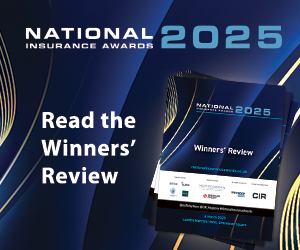McGill and Partners has partnered with Renew Risk to develop catastrophe models for offshore wind portfolios, via an initial five models in the Oasis framework, an open-source cat model platform, covering Northeast US hurricane, Taiwan earthquake and typhoon and Japan earthquake and typhoon.
The models are designed to assist in providing a fuller understanding of the natural peril risks, determining appropriate insurance limits and grasp of risk aggregation across multiple windfarms in one region.
McGill and Partners commissioned the project with Renew Risk, working closely with the firm to develop the models and are the first in the market to license the models.
Tom Sexton, partner and head of renewables, power and energy at McGill and Partners said: “There has been a pressing need for a custom-built offshore wind catastrophe model to accurately assess the probability of loss for this rapidly developing asset class in high-risk zones. These models will assist both offshore wind clients and insurers to access more efficient risk transfer capital. They will enable insurers and reinsurers to price coverage more accurately, understand asset class aggregations and assess offshore wind's impact on other lines of business - previously inaccessible insights. This will give insurers and reinsurers the confidence to provide greater capacity at more appropriate pricing levels to our offshore wind clients in high catastrophe zones.”
Ashima Gupta, CEO at Renew Risk, added: “Offshore wind plays a pivotal role in the transition to a renewable energy economy. But as the industry witnesses a surge in new projects located in regions susceptible to natural disasters, it is important to have robust risk models which will allow re/insurers to appropriately assess the risk of these billion-dollar assets constructed in the deep sea.
"With our state-of-the-art data science-driven risk models, we can enable our clients to thoroughly assess the intricate risks associated with natural disasters, thereby instilling the confidence needed to furnish these projects with precisely tailored insurance coverage. By offering this robust risk management solution, we are actively contributing to the progress towards a greener and more sustainable energy landscape.”
Traditionally, the catastrophe risk to offshore windfarms has been quantified with general rules of thumb for different regions, or by modelling the risks as onshore.
McGill says that, to date, there are no commercially available models for offshore windfarms in the areas of interest where many offshore assets are increasingly being built, frequently in areas that are highly exposed to natural catastrophe perils.
Printed Copy:
Would you also like to receive CIR Magazine in print?
Data Use:
We will also send you our free daily email newsletters and other relevant communications, which you can opt out of at any time. Thank you.











YOU MIGHT ALSO LIKE